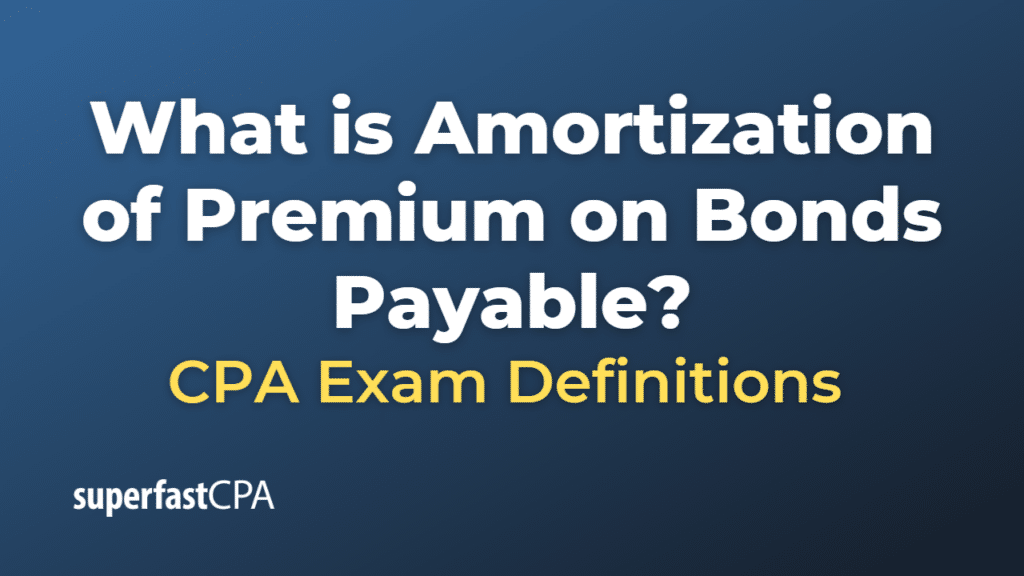Amortization of Premium on Bonds Payable
Amortization of premium on bonds payable is the process of gradually reducing the premium on bonds payable over the bond’s life until the bond’s carrying value equals its face value at maturity. The premium arises when the bonds are issued at a price higher than their face value due to a lower market interest rate than the stated interest rate on the bond.
There are two methods to amortize the premium on bonds payable:
- Straight-line method: The premium is amortized evenly over the life of the bond.
- Effective interest method: The premium is amortized based on the difference between the interest expense (calculated using the market interest rate) and the cash interest payment (calculated using the stated interest rate).
Example of Amortization of Premium on Bonds Payable
Let’s assume Company ABC issues a 5-year, $100,000 bond with a stated interest rate of 5% and a market interest rate of 4%. Due to the lower market interest rate, the bond is sold at a premium, for $104,000. The bond pays interest annually.
Here’s an example of how to amortize the premium on bonds payable using the straight-line method:
- Calculate the total premium: $104,000 (issue price) – $100,000 (face value) = $4,000
- Determine the annual premium amortization: $4,000 (total premium) ÷ 5 years (bond’s life) = $800 per year
Each year, the premium of $800 will be amortized, and the carrying value of the bond will decrease by $800. By the end of the 5-year period, the carrying value of the bond will equal its face value of $100,000.
Here’s an example using the effective interest method:
- Calculate the cash interest payment: $100,000 (face value) × 5% (stated interest rate) = $5,000 per year
- Determine the interest expense for the first year: $104,000 (issue price) × 4% (market interest rate) = $4,160
- Calculate the premium amortization for the first year: $5,000 (cash interest payment) – $4,160 (interest expense) = $840
- Update the carrying value of the bond: $104,000 (issue price) – $840 (premium amortization) = $103,160
Repeat this process for each year, using the updated carrying value to calculate the interest expense, until the bond’s carrying value equals its face value at maturity.













